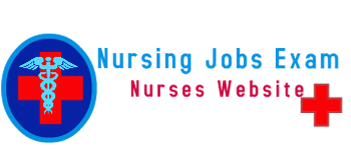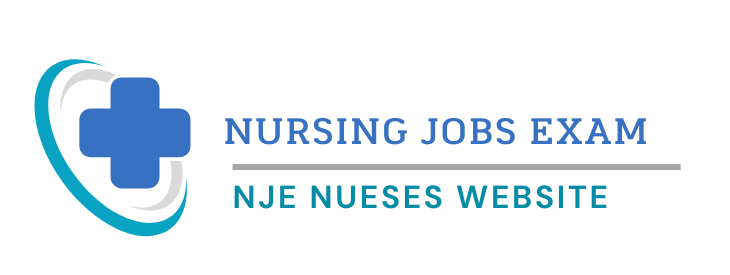Myasthenia gravis (MG) is a chronic autoimmune disorder affecting the neuromuscular transmission of impulses in the voluntary muscles of the body. MG is characterized by fluctuating weakness increased by exertion. Weakness increases during the day and improves with rest. Presentation and progression vary due to an antibody-mediated attack against acetylcholine receptors at the neuromuscular junction. Loss of acetylcholine receptors leads to a defect in neuromuscular transmission. Cardinal features are muscle weakness and fatigue. Evidence suggests that the frequency and recognition of MG is increasing.
What are the Causes of Myasthenia Gravis?
1. MG is idiopathic in most patients. Penicillamine is known to induce various autoimmune disorders, including MG.
2. Depletion of acetylcholine receptors at neuromuscular junctions brought about by an autoimmune attack. In about 90% of patients, no specific cause can be identified, but genetic makeup is a predisposing factor, suggesting environmental factors may be involved in the development of this disorder.
3. The reduced number of acetylcholine receptors results in diminished amplitude of end-plate potentials. Failed transmission of nerve impulses to skeletal muscle at the myoneural junction results in decreased muscle power, clinically manifested as extreme fatigue and weakness. The pattern of muscle involvement varies among individuals.
4. About 80% to 90% of patients with MG have serum antibodies to acetylcholine.
5. Thyroid gland abnormalities are present in 80% of patients. Thymic tumor is the most important known cause; 10% of patients with MG have a thymoma.
6. Cholinergic crisis can result from overmedication with anticholinergic drugs, which release too much acetylcholine at the neuromuscular junction.
7. Brittle crisis occurs when the receptors at the neuromuscular junction become insensitive to anticholinesterase medication.
8. Women are three times more susceptible to developing MG than men.
9. Spontaneous remissions are rare. Long and complete remissions are even less common. Most remissions (with treatment) occur during the first 3 years of the disease.
What are the Symptoms of Myasthenia Gravis?
1. Extreme muscular weakness and easy fatigability.
2. Vision disturbances—diplopia and ptosis from ocular weakness. Extraocular muscle weakness or ptosis is present initially in 50% of patients and occurs during the course of illness in 90%. Bulbar muscle weakness is also common, along with weakness of head extension and flexion.
3. Facial muscle weakness causes a mask-like facial expression. Patients may present a snarling appearance when attempting to smile.
4. Dysarthria and dysphagia from the weakness of laryngeal and pharyngeal muscles.
5. Proximal limb weakness, with specific weakness in the small muscles of the hands. Patients progress from mild to more severe disease over weeks to months. Weakness tends to spread from the ocular to facial to bulbar muscles and then to truncal and limb muscles. The disease remains ocular in only 16% of patients. About 87% of patients generalize within 13 months after onset.
6. Respiratory muscle weakness can be life-threatening. Intercurrent illness or medication can exacerbate weakness, quickly precipitating a myasthenic crisis and rapid respiratory compromise.
7. Impending myasthenic crisis may be triggered by respiratory infection, aspiration, physical/emotional stress, and changes in medications. Symptoms include:
a. Sudden respiratory distress.
b. Signs of dysphagia, dysarthria, ptosis, and diplopia.
c. Tachycardia, anxiety.
d. Rapidly increasing weakness of extremities and trunk.
How is Myasthenia Gravis Diagnosed?
1. Serum test for acetylcholine receptor antibodies—positive in up to 90% of patients.
2. Electrophysiologic (EMG) testing—reveals decremental response to repetitive nerve stimulation.
3. Edrophonium (Tensilon) test—IV injection of this short-acting anticholinesterase relieves symptoms temporarily. After injection, a marked but temporary improvement in muscle strength identified by performance of repetitive movements or EMG testing suggests MG. It also differentiates myasthenic crisis from cholinergic crisis.
4. Thyroid function tests should be done to evaluate for coexistent thyroid disease and CT scan to assess enlargement of thymus gland. Chest CT scan is mandatory to identify thymoma in all cases of MG. This is especially true in older individuals.
What is the Treatment for Myasthenia Gravis
1. With treatment, most patients can lead fairly normal lives.
2. Oral anticholinesterase drugs, such as neostigmine and pyridostigmine, are first-line treatments for mild MG, enhancing neuromuscular transmission.
3. Immunosuppressive drugs, such as prednisone, are the mainstay of treatment when weakness is not adequately controlled by anticholinergic medication. Azathioprine may be added as a steroid-sparing agent. Immunosuppressant treatment is often permanent.
4. Plasmapheresis removes antibodies from the blood and is used for patients in myasthenic crisis or for short-term treatment of patients undergoing thymectomy. IV Ig is also an option and has less side effects.
5. Thymectomy is indicated for patients with tumours or hyperplasia of the thymus gland (thymectomy is not usually beneficial in late-onset patients).
6. Interventions for myasthenic crisis:
a. Immediate hospitalization and may require intensive care.
b. Edrophonium to differentiate crisis and treat myasthenic crisis; temporarily worsens cholinergic crisis; unpredictable results with brittle crisis.
c. Airway management—mechanical ventilation, vigorous suctioning, oxygen therapy, postural drainage with percussion and vibration. Tracheostomy may be required, depending on the duration of intubation. Maintain semi fowler’s position, especially in obese patients.
d. Plasmapheresis, IV Ig, and high-dose parenterally administered corticosteroids are used to reduce symptoms.
e. Neostigmine IV for myasthenic crisis.
f. Discontinuation of anticholinergic medications until respiratory function improves; atropine to reduce excessive secretions for cholinergic crisis.
Complications of Myasthenia Gravis
1. Aspiration.
2. Complications of decreased physical mobility.
3. Respiratory failure.
Nursing Assessment for Myasthenia Gravis
1. Expect the patient to complain of extreme muscle weakness and fatigue.
2. Assess CN function, motor fatigability with repetitive activity, and speech. Observe eye muscles (usually affected first) for ptosis, ocular palsy, diplopia.
3. Assess respiratory status—breathlessness, respiratory weakness, tidal volume, and vital capacity measurements.
4. Assess complications secondary to drug treatment—long term immunomodulating therapies may predispose patients with MG to various complications.
a. Long-term steroid use may lead to or aggravate many conditions, such as osteoporosis, cataracts, hyperglycemia, weight gain, avascular necrosis of hip, hypertension, and gastritis or peptic ulcer disease. To decrease the risk of ulcer, patients should take an H2 blocker or antacid.
b. Increased risk for infection from immunomodulating therapy, especially if the patient is on more than one agent. Such infections include tuberculosis, systemic fungal infections, and Pneumocystis carinii pneumonia.
c. Risk of lymphoproliferative malignancies may be increased with chronic immunosuppression.
d. Immunosuppressive drugs may have teratogenic effects. In addition, risk of congenital deformity (arthrogryposis multiplex) is increased in offspring of women with severe MG.
Nursing Diagnoses and Care Plan for Myasthenia Gravis
Fatigue-related to disease process.
Risk for Aspiration related to muscle weakness of face and tongue.
Impaired Social Interaction related to diminished speech
capabilities and increased secretions.
Nursing Interventions for Myasthenia Gravis
Minimizing Fatigue
1. Plan exercise, meals, and other ADL during energy peaks. Time administration of medications 30 minutes before meals to facilitate chewing and swallowing.
2. Assist the patient in developing realistic activity schedule.
3. Provide an eye patch and alternate eyes for the patient with diplopia to allow safe participation in activity.
4. Allow for rest periods throughout the day.
5. Obtain assistive devices to help the patient perform ADL.
Preventing Aspiration
1. Assess the patient’s oral motor strength before each meal.
2. Teach the patient to position his or her head in a slightly flexed position to protect airway during eating.
3. Modify diet, as needed, to minimize risk of aspiration; for instance, soft, solid foods instead of liquids. Teach the patient that eating warm foods (not hot foods) can ease swallowing difficulties.
4. Have suction available that the patient can operate.
5. Administer IV fluids and nasogastric tube feedings to the patient in crisis or with impaired swallowing; elevate head of bed after feeding.
6. Suction the patient frequently if on a mechanical ventilator; assess breath sounds and check chest x-ray reports because aspiration is a common problem.
Maintaining Social Interactions
1. Encourage the patient to use an alternate communication method, such as flashcards or a letter board, if speech is affected.
2. Instruct the patient to speak in a slow manner to avoid voice strain; refer to speech therapy, as needed.
3. Show the patient how to cup chin in hands during speech to support lower jaw and assist with speech.
4. Teach the patient to tilt head and to carry a handkerchief to manage secretions in public.
5. Encourage family participation in care.
6. Refer the patient to the Myasthenia Gravis Foundation of America (www.myasthenia.org) to meet other patients with the disease who lead productive lives.
Community and Home Care Considerations
1. Assess the home environment for physical and emotional stressors, such as uncomfortable temperature, draft, or loud noises.
2. Emphasize continued follow-up and compliance with treatment regimen.
3. Identify the need for additional home care services such as respiratory therapy, physical therapy, and nutritional services.
4. Assess the patient frequently for fluctuation in condition and inform caregivers that this is common.
5. Teach the patient and family how to use home suction in case of aspiration. Make sure everyone in household knows Heimlich manoeuvre.
Patient Education and Health Maintenance
1. Instruct the patient and family regarding the symptoms of crisis. Intercurrent infection or treatment with certain drugs may worsen symptoms of MG temporarily. Mild exacerbation of weakness is possible in hot weather.
2. Review the peak times of medications and how to schedule activity for best results. For patients on anticholinesterase therapy:
a. Stress accurate dosage and times; take anticholinesterase drugs 30 to 45 minutes before meals.
b. Tell the patient not to skip medication.
c. Instruct the patient to avoid taking medication with fruit, coffee, tomato juice, or other medications.
d. Inform the patient of adverse effects such as GI distress.
3. Stress the importance of activity with scheduled rest periods before fatigue develops.
4. Teach the patient ways to prevent crisis and aggravation of symptoms.
a. Avoid exposure to colds and other infections.
b. Avoid excessive heat and cold.
c. Inform the dentist of condition because use of procaine is not well tolerated.
d. Avoid emotional upset; plan ahead to minimize stress.
5. Encourage the patient to wear a MedicAlert bracelet.
6. Stress the importance of adequate nutrition; instruct to chew food thoroughly and eat slowly.





